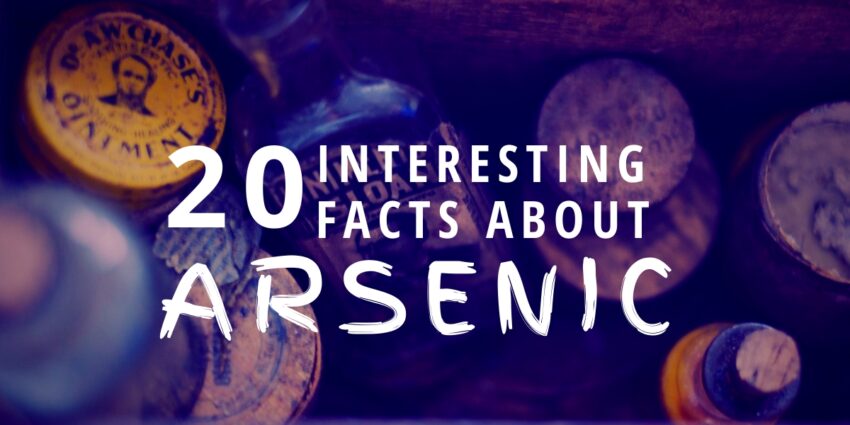A crystalline metalloid found in minerals such as arsenopyrite, realgar and orpiment, the infamous arsenic has an amazing history – from the time of the Roman Empire to the Victorian era, arsenic was considered the “king of poisons” and the “poison of kings.” Beyond its use as a poison for millennia, though, arsenic is today an important mineral for national sovereignty.
As a Critical Resource Mineral, the essential use of arsenic is in lead alloying. For example, in car batteries, lead components are given strength with the addition of a small amount of arsenic. Arsenic is also used as a semiconductor doping agent. In integrated circuits, gallium arsenide is an important semiconductor material for solar cells, space research, and telecommunications. Other important uses for arsenic include, but are not limited to, specialty optical materials, short-wave infrared technology, brass dezincification, and a variety of biomedical applications.
Considering that about 90% of the arsenic used by the United States is imported from China, the world’s primary producer, it cannot be disputed that trade wars and geopolitical tensions could limit the ability of the U.S. to secure necessary arsenic resources in the future.
Be sure to check out all other critical raw materials (CRMs), as well.
Beyond the basics above, what else should we know about arsenic? Check out the 20 interesting facts below!
- Greek philosopher Aristotle, in the fourth century BC, referred to “sandarach”, or “red lead”, which was later renamed “arhenicum” by his student, Theophrastus of Eresos.
- In 82 BC, in an attempt to stem what was becoming an epidemic of large-scale arsenic poisonings, the Roman dictator and constitutional reformer Lucius Cornelius Sulla issued the Lex Cornelia, probably the first law against poisoning.
- Dioscorides, a Greek physician in the court of the Roman Emperor Nero, described arsenic as a poison in the first century.
- Greek historian Olympiodorus of Thebes (5th century AD) roasted arsenic sulfide and obtained white arsenic (As2O3).
- Albertus Magnus (1193-1280), a German philosopher and theologian, was the first to state that arsenic has a metal-like nature. In ‘De Mineralibus’ he described how the metal could be obtained by heating orpiment (As2S3) with soap. Magnus first isolated the element arsenic in 1250.
- 1500: In Italy, during the Middle Ages, the most widely accused of poisoners were the Borgias, specifically Pope Alexander VI, and his son, Cesare.
- 1520: The first precise directions for the preparation of metallic arsenic are found in the writings of Paracelsus, a physician-alchemist in the late Middle Ages who is often called the “father of modern toxicology.”
- Two methods of preparing arsenic were published by German pharmacist Johann Schroeder in 1649.
- 1651: Guilia Toffana made arsenic-laced cosmetics and instructed women on their use. A professional poisoner, Toffana invented Aqua Tofana, a poison named after her, and under torture later confessed to killing 600 men with her poisons in Rome alone between 1633 and 1651.
- 1659: Hieronyma Spara organized group instruction in the homicidal uses of arsenic for a number of young married women who wanted to better their station in life by becoming wealthy young widows.
- In 1786, a British physician named Thomas Fowler presented his arsenic-based, cure-all tonic known as Fowler’s solution. The tonic was commonly used to treat skin conditions, such as psoriasis. Unfortunately, it became apparent that people who used the product had a significantly higher risk of developing cancer, particularly on the exact spot where the solution was applied.
- In 1836, the English chemist James Marsh perfected a sensitive and specific chemical test for arsenic, and poisoners thereafter had little hope of escaping detection.
- 1850: In the Victorian era, white arsenic, or arsenic trioxide (As2O3), was widely available and sold in grocery stores. Women would eat or rub arsenic mixed with vinegar or chalk into their skin as a complexion-enhancer, trying to make their skin paler to show that they did not work in the fields.
- In 1910, German pharmacologist Paul Ehrlich developed the arsenic-based drug Salvarsan, also known as arsphenamine, as a treatment for syphilis, a disease that was endemic and incurable at the time. The drug was incredibly effective and remained the top medicine for curing syphilis until penicillin became available in the 1940s
- The development of Lewisite as a war gas was made by W. Lee Lewis in 1918. Lewisite was an organic blistering gas containing arsenic. On contact with the skin the gas reacted with sulfur on keratin, a skin protein, to produce huge blisters that were made worse by the release of caustic hydrochloric acid, also produced by the chemical reaction.
- In May 2018, the U.S. Department of the Interior, in coordination with other executive branch agencies, published a list of 35 critical minerals (83 FR 23295), including arsenic. This list was developed to serve as an initial focus, pursuant to Executive Order 13817, ‘‘A Federal Strategy to Ensure Secure and Reliable Supplies of Critical Minerals” (82 FR 60835).
- The word “arsenic” comes from the Persian word “zarnikh,” meaning “yellow orpiment,” which the Greeks adopted as “arsenikon.” The word is also related to the Greek word “arsenikos,” meaning “masculine” or “potent.” The Latin word for it became “arsenicum.”
- Arsenic may be obtained from copper, gold, and lead smelter flue dust, as well as from roasting arsenopyrite, the most abundant ore mineral of arsenic.
- Arsenic is 53rd most plentiful element in the Earth’s crust at 1.8 parts per million by weight. The abundance of arsenic in our solar system is 12 parts per billion by weight.
- Arsenic adds a blue color to pyrotechnic displays.
